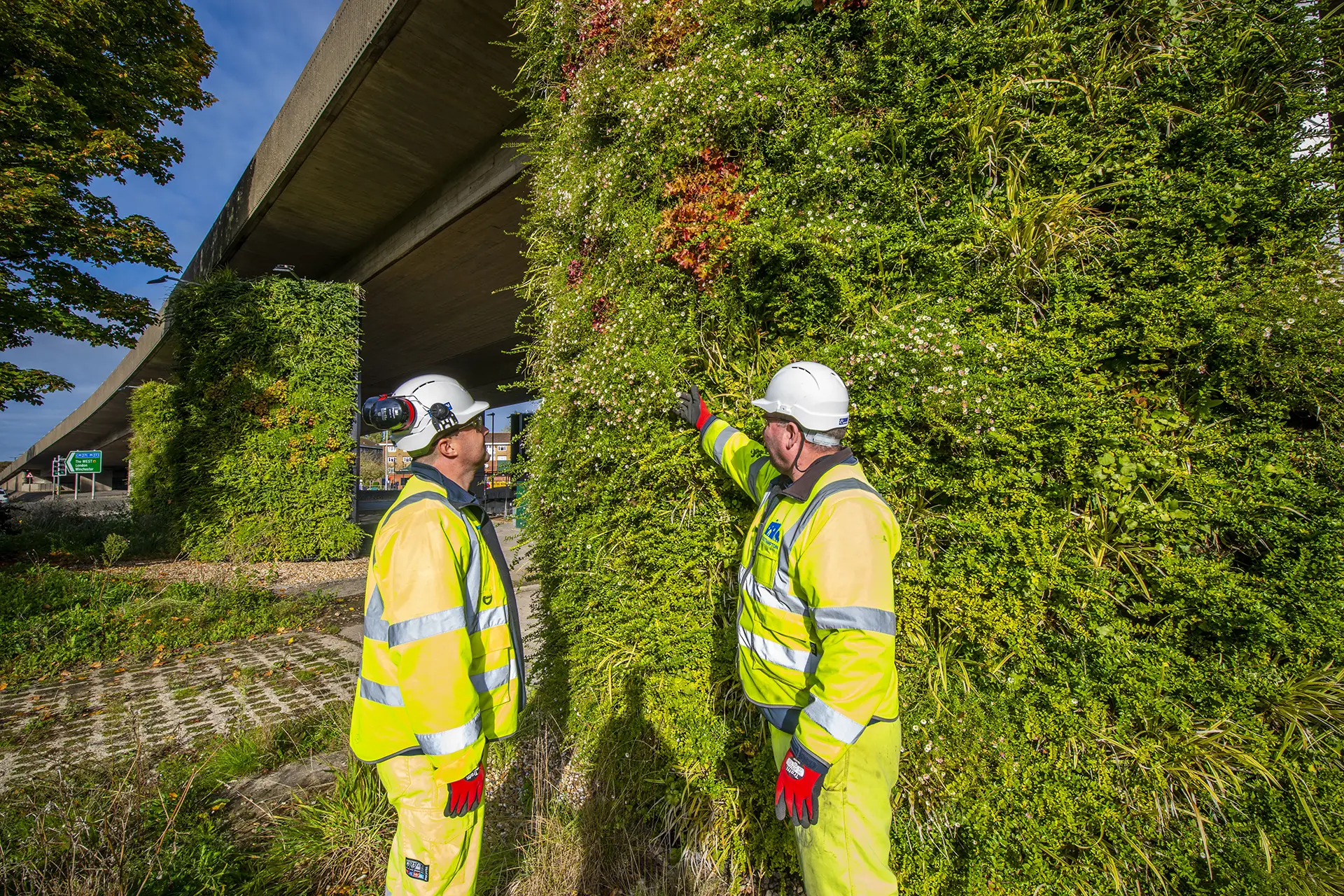The construction sector responsible for an estimated one third of the world’s overall waste¹ and extracting nearly 40 billion tonnes of raw materials from the planet each year².
We need to shift the dial from managing the waste we produce to implementing design driven circular economy principles that eliminate waste and pollution, and circulate products and materials at their highest value.
We will reduce our waste footprint through implementing the Construction Leadership Council’s zero avoidable waste routemap and adopting circular economy principles. Together, these actions will deliver value for our customers through reducing costs and carbon emissions, designing out waste and creating opportunities, at different stages in the project lifecycle, to capture residual value from materials or goods through re-use, re-manufacture and recycling.
Having made strong progress in this area with our UK business achieving its previous target to reduce tonnes of waste generated per £1 million of revenue by 40%, we have identified the five areas that make up our waste footprint and actions that we need to take to achieve zero avoidable waste as outlined in the diagram below.
To support each of our businesses in achieving zero avoidable waste, we have undertaken a further, deeper analysis of our waste data, attitudes and behaviours around resource efficiency and waste management. This analysis has helped us to focus our efforts on the areas that will make the most difference: sharing knowledge and upskilling, collaboration in design and procurement and improving the uptake of existing resource efficient solutions. The analysis will also be used to set local targets, specific to the areas each of our businesses can drive progress in, which will form part of our business specific UK Bridging the Gap sustainability action plans. These plans detail each business area’s actions to contribute to our overall sustainability commitments and targets.
Our targets
Collaborating to drive resource efficiencies
Working with our partners from the outset of a scheme, including our Strategic Design Partners in the UK, Jacobs, AtkinsRéalis and Mott MacDonald, the insights that we gain from our waste and materials data are used as an evidence-base to help our customers consider resource efficiency. This includes strategic decisions like choosing refurbishment over building a new asset as well as materials selection and the use of off-site manufacturing approaches to help reduce waste and increase the re-use, re-manufacture and recycling of materials in the future.
Case studies
Using sustainable materials
On our Spencer Road Project in Southampton, we used Hydraulically Bonded Material (HBM), an aggregate which hardens chemically with water, to provide an environmentally friendly and cost-effective solution to full depth carriageway reconstruction.
This approach enables us to dig down to a shallower depth of 275mm, compared to the traditional reconstruction approach of 700mm; generating a significant carbon saving of over 1,500kg and allowing us to divert 1,463 tonnes of waste material from landfill. This method has also improved safety by eliminating the potential of service strikes due to minimising the depth to which we need to excavate.
